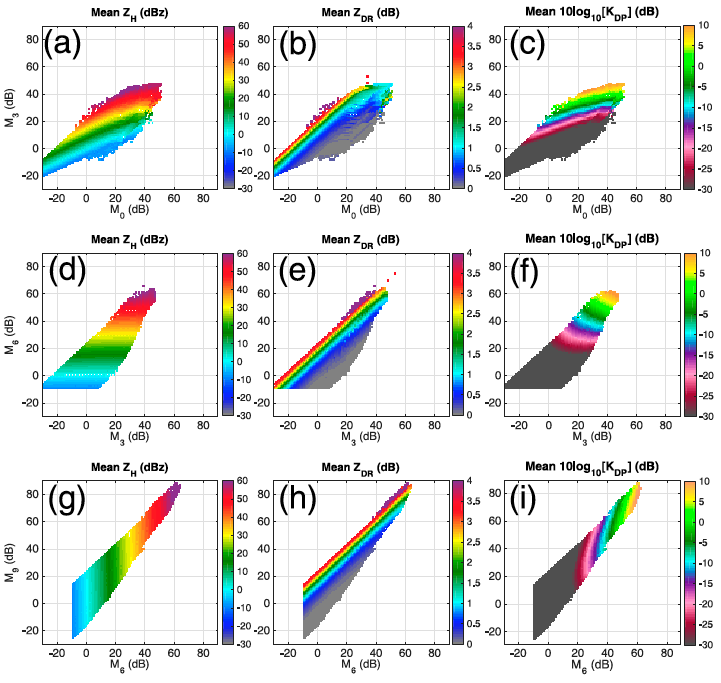New approach to converting model output to radar variables
Submitter:
Kumjian, Matthew — Pennsylvania State University
van Lier-Walqui, Marcus — Columbia University
Area of research:
Cloud Processes
Journal Reference:
Science
We developed a new polarimetric radar “forward operator” for rain -- a tool to convert weather model output to simulated radar-observed quantities. Our forward operator was built using over 220 million raindrop size distributions compiled from Atmospheric Radiation Measurement (ARM) disdrometer observations and a detailed bin microphysics model. Our statistical approach avoids the inflexible and unrealistic assumptions imposed by existing methods and provides an estimate of uncertainty associated with variability in rain properties.
Impact
Forward operators are critical for connecting model-simulated fields with those that are observed by, for example, dual-polarization radar. However, existing approaches impose rigid assumptions about the raindrop size distribution (DSD) shape, forcing rain to conform to an unrealistic model, thereby generating a mapping that does not exist in nature. Our moment-based forward operator removes the onerous constraint of imposing a DSD functional form, removing a major source of uncertainty and error, and quantifies the uncertainty associated with natural DSD variability. It has broad applicability, as it can be used in conjunction with bulk microphysics models that predict any number and combination of DSD moments.
Summary
We developed a dual-polarization radar forward operator for use in rain microphysics models. The forward operator was built using a large data set of ARM disdrometer observations from around the world and bin microphysical model simulations. It maps polarimetric radar observables to raindrop size distribution (DSD) “moments,” which are weighted integrals over the DSD. Our forward operator improves on existing methods because it (i) does not assume any DSD functional form a priori, and (ii) provides an estimate of the uncertainty in this mapping owing to DSD natural variability. Further, the forward operator is flexible and may be used with models predicting any number and combination of DSD moments. The forward operator performed well in idealized tests using independent bin model simulations as truth. Our results also indicated that, when blending models and dual-polarization radar measurements, higher-order DSD moments (e.g., the 3rd, 6th, and 9th) are superior to the lower-order moments typically predicted in bulk microphysics schemes.


